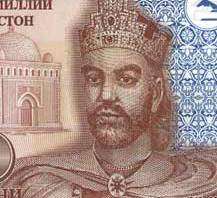892
| Millennium: | 1st millennium |
|---|---|
| Centuries: | 8th century · 9th century · 10th century |
| Decades: | 860s · 870s · 880s · 890s · 900s · 910s · 920s |
| Years: | 889 · 890 · 891 · 892 · 893 · 894 · 895 |
| 892 by topic | |
| Politics | |
| State leaders – Sovereign states | |
| Birth and death categories | |
| Births – Deaths | |
| Establishment and disestablishment categories | |
| Establishments – Disestablishments | |
| Gregorian calendar | 892 DCCCXCII |
| Ab urbe condita | 1645 |
| Armenian calendar | 341 ԹՎ ՅԽԱ |
| Assyrian calendar | 5642 |
| Bengali calendar | 299 |
| Berber calendar | 1842 |
| Buddhist calendar | 1436 |
| Burmese calendar | 254 |
| Byzantine calendar | 6400–6401 |
| Chinese calendar | 辛亥年 (Metal Pig) 3588 or 3528 — to — 壬子年 (Water Rat) 3589 or 3529 |
| Coptic calendar | 608–609 |
| Discordian calendar | 2058 |
| Ethiopian calendar | 884–885 |
| Hebrew calendar | 4652–4653 |
| Hindu calendars | |
| - Vikram Samvat | 948–949 |
| - Shaka Samvat | 813–814 |
| - Kali Yuga | 3992–3993 |
| Holocene calendar | 10892 |
| Iranian calendar | 270–271 |
| Islamic calendar | 278–279 |
| Japanese calendar | Kanpyō 4 (寛平4年) |
| Javanese calendar | 790–791 |
| Julian calendar | 892 DCCCXCII |
| Korean calendar | 3225 |
| Minguo calendar | 1020 before ROC 民前1020年 |
| Nanakshahi calendar | −576 |
| Seleucid era | 1203/1204 AG |
| Thai solar calendar | 1434–1435 |
| Wikimedia Commons has media related to 892. |

Emir Isma'il ibn Ahmad (849–907)
Year 892 (DCCCXCII) was a leap year starting on Saturday (link will display the full calendar) of the Julian calendar.
Events
By place
Europe
- Summer – Poppo II, duke of Thuringia (Central Germany), is deposed by king Arnulf of Carinthia. East Frankish forces and their Magyar (Hungarian) allies invade Great Moravia.[1][2]
- Vladimir, ruler (knyaz) of the Bulgarian Empire, signs a military alliance with Arnulf of Carinthia of the East Frankish Kingdom this against the pro-Byzantine policy of his father.
Britain
- Autumn – A Viking force with a fleet of 250 longships arrives at the river mouth of the settlement of Lympne (East Kent). They attack the small fortification (called Eorpeburnan).[3]
- Viking raiders (80 ships) under Hastein arrive in the Thames Estuary and set up camp at Middleton. King Alfred the Great decides to position his army in the Wealden forest.[4]
Arabian Empire
- April – Al-Mu'tadid, the de facto regent of the Abbasid Caliphate, removes his cousin Al-Mufawwad from succession, and becomes himself caliph after the death of Al-Mu'tamid.
- May – Ibrahim II, Aghlabid emir of Ifriqiya, sends an large army to Palermo to impose Arab authority from Kairouan. After a uprising, the Sicilians make a bid for independence.[5]
- Summer – The Persian nobility installs Isma'il ibn Ahmad, the former governor of Transoxiana, as ruler (emir) of the Samanid Empire after the death of his brother Nasr I.
Asia
- Former Silla general Gyeon Hwon seizes the cities of Wansanju and Mujinju taking over the territory of Baekje. He wins the support of the people and declares himself king.[6]
Births
- March 30 – Shi Jingtang, founder of the Later Jin Dynasty (d. 942)
- Ai (Li Zhou), emperor (puppet ruler) of the Tang Dynasty (d. 908)
- Jing Yanguang, Chinese general and governor (d. 947)
- Saadia Gaon, Jewish philosopher and exegete (or 882)
- Wang Sitong, Chinese general and governor (d. 934)
- Wang Yuanying, crown prince of Former Shu (d. 913)
- Zhang, empress consort of Zhu Youzhen (d. 915)
Deaths
- April 5 – Al-Mu'tamid, Muslim caliph of the Abbasid Caliphate
- October 9 – Al-Tirmidhi, Persian scholar and hadith compiler (b. 824)
- Berengaudus, Frankish Benedictine monk (b. 840)
- Bernard, illegitimate son of Charles the Fat (or 891)
- Branimir, ruler (knyaz) of Croatia (approximate date)
- Nasr I, Muslim emir of the Samanid Empire
- Sun Ru, Chinese warlord and governor
- Zhao Deyin, Chinese warlord and chancellor
References
- ↑ Kristó 1996, p. 175.
- ↑ Kirschbaum 2005, p. 29.
- ↑ Paul Hill (2009). The Viking Wars of Alfred the Great, p. 120. ISBN 978-1-59416-087-5.
- ↑ Paul Hill (2009). The Viking Wars of Alfred the Great, p. 121. ISBN 978-1-59416-087-5.
- ↑ Amari 1854, p. 429.
- ↑ Lee Hyun-hee, Park Sung-soo, Yoon Nae-hyun, translated by The Academy of Korean Studies, New History of Korea pp. 263–265, Jimoondang, Paju, 2005. ISBN 89-88095-85-5.
This article is issued from Wikipedia - version of the 11/30/2016. The text is available under the Creative Commons Attribution/Share Alike but additional terms may apply for the media files.